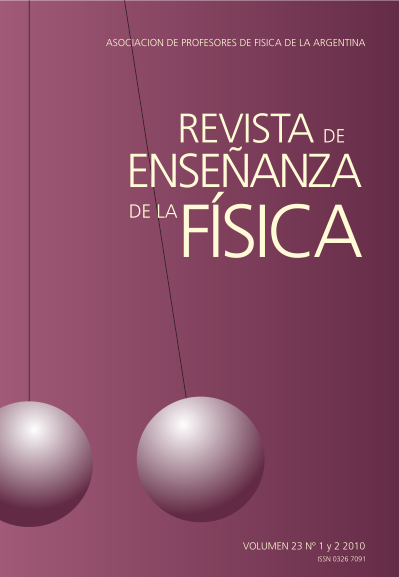Communicative contexts appropriate and inappropriate inclusion of students visually impaired in teaching thermology
Keywords:
thermology teaching, visual impairment, communicational context, inclusion, special education needsAbstract
This article represents a continuation of the results of a research presented in Camargo and Nardi (2007).It is inserted in the study that seeks to understand the main student’s inclusion barriers with visual impairment
in the Physics classes. It aims to understand which communication context shows kindness or
unkindness to the impairment visual student’s real participation in thermology activities. For this, the research
defi nes, from the empirical - sensory and semantics structures, the used languages in the activities,
as well, the moment and the speech pattern in which the languages have been used. As result, identifi es
a strong relation between the uses of the interdependent empirical structure audio-visual language in the
non-interactive episodes of authority; a decrease of this structure use in the interactive episodes and the
creation of education segregation environments within the classroom.
Downloads
Published
2010-10-13
How to Cite
Pires de Camargo, E., Nardi, R., & Peralta Sparvoli, D. (2010). Communicative contexts appropriate and inappropriate inclusion of students visually impaired in teaching thermology. Journal of Physics Teaching, 23(1-2), 21–40. Retrieved from https://revistas.unc.edu.ar/index.php/revistaEF/article/view/7992
Issue
Section
Research
License
Aquellos autores/as que tengan publicaciones con esta revista, aceptan los términos siguientes:Los autores/as conservarán sus derechos de copiar y redistribuir el material, bajo los términos estipulados en la Licencia de reconocimiento, no comercial, sin obras derivadas de Creative Commons que permite a terceros compartir la obra bajo las siguientes condiciones:
- Reconocimiento — Debe reconocer adecuadamente la autoría, proporcionar un enlace a la licencia e indicar si se han realizado cambios. Puede hacerlo de cualquier manera razonable, pero no de una manera que sugiera que tiene el apoyo del licenciador o lo recibe por el uso que hace.
- NoComercial — No puede utilizar el material para una finalidad comercial.
- SinObraDerivada — Si remezcla, transforma o crea a partir del material, no puede difundir el material modificado.
- Los autores/as podrán adoptar otros acuerdos de licencia no exclusiva de distribución de la versión de la obra publicada (p. ej.: depositarla en un archivo telemático institucional o publicarla en un volumen monográfico) siempre que se indique la publicación inicial en esta revista.
- Se permite y recomienda a los autores/as difundir su obra a través de Internet (p. ej.: en archivos telemáticos institucionales o en su página web) antes y durante el proceso de envío, lo cual puede producir intercambios interesantes y aumentar las citas de la obra publicada. (Véase El efecto del acceso abierto).














